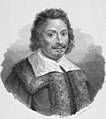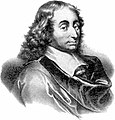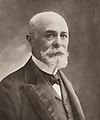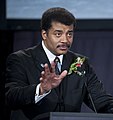User:Claybro20015/sandbox

A physicist is a scientist who does research in physics. Physicists study a wide range of physical phenomena in many branches of physics spanning all length scales: from sub-atomic particles of which all ordinary matter is made (particle physics) to the behavior of the material Universe as a whole (cosmology).
The term "physicist" was coined by William Whewell in his 1840 book The Philosophy of the Inductive Sciences.[1]
Education
[edit]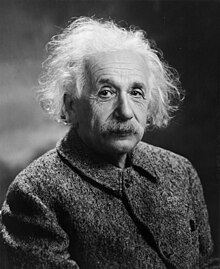
Most material a student encounters in the undergraduate physics curriculum is based on discoveries and insights of a century or more in the past. Alhazen's intromission theory of light was formulated in the 11th century; Newton's laws of motion and Newton's law of universal gravitation were formulated in the 17th century; Maxwell's equations, 19th century; and quantum mechanics, early 20th century. The undergraduate physics curriculum generally includes the following range of courses: chemistry, classical physics, kinematics, astronomy and astrophysics, physics laboratory, electricity and magnetism, thermodynamics, optics, modern physics, quantum physics, nuclear physics, particle physics, and solid state physics. Undergraduate physics students must also take extensive mathematics courses (calculus, differential equations, linear algebra, complex analysis, etc.), and computer science and programming. Undergraduate physics students often perform research with faculty members.
Many positions, especially in research, require a doctoral degree. At the Master's level and higher, students tend to specialize in a particular field. Fields of specialization include experimental and theoretical astrophysics, atomic physics, molecular physics, biophysics, chemical physics, medical physics, condensed matter physics, cosmology, geophysics, gravitational physics, material science, nuclear physics, optics, particle physics, and plasma physics. Post-doctoral experience may be required for certain positions.
Honors and awards
[edit]The highest honor awarded to physicists is the Nobel Prize in Physics, awarded since 1901 by the Royal Swedish Academy of Sciences.
Employment
[edit]The three major employers of career physicists are academic institutions, government laboratories, and private industries, with the largest employer being the last.[2] Many trained physicists, however, apply their skills to other activities, in particular to engineering, computing, and finance, often quite successfully. Some physicists take up additional careers where their knowledge of physics can be combined with further training in other disciplines, such as patent law in industry or private practice. In the United States, a majority of those in the private sections having a physics degree actually work outside the fields of physics, astronomy and engineering altogether.[3]
Nobel laureate Sir Joseph Rotblat has suggested that physicists going into employment in scientific research should honour a Hippocratic Oath for Scientists.
List of important physicists
[edit]This list of "famous" or "notable" people has no clear inclusion or exclusion criteria. Please help improve this article by defining clear inclusion criteria to contain only subjects that fit those criteria. (December 2013) |
The following is a gallery of highly influential and important figures in the history of physics. For a list that includes even more people, see list of physicists.
-
Nicolaus Copernicus (1473 - 1543): published De revolutionibus orbium coelestium (On the Revolutions of the Celestial Spheres) in 1543 - often considered the starting point of modern astronomy - in which he argued that the Earth and the other planets revolved around the Sun (heliocentrism)
-
Galileo Galilei (1564 - 1642): discovered the uniform acceleration rate of falling bodies, improved on the refracting telescope, discovered the four largest moons of Jupiter, described projectile motion and the concept of weight; known for championing of the Copernican theory of heliocentricism against Church opposition.
-
Johannes Kepler (1571—1630): used the accurate observations of Tycho Brahe to formulate three fundamental laws of planetary motion, described elliptical motion of planets around the sun, developed early telescopes, invented the convex eyepiece, discovered a means of determining the magnifying power of lenses.
-
Evangelista Torricelli (1608 - 1647): invented the barometer (a glass tube of mercury inverted into a dish), found that the change of height of the mercury each day was from atmospheric pressure, worked in geometry and developed integral calculus, published findings on fluid and projectile motion in his 1644 Opera Geometrica (Geometric Works)
-
Blaise Pascal (1623 - 1662): experimented with fluids, formulated Pascal's law in the 1650s stating that the pressure applied to a fluid taken in a closed container is transmitted with equal force throughout the container, proved that air has weight and that air pressure can produce a vacuum, namesake of the unit of pressure: the pascal (Pa)
-
Christiaan Huygens (1629 - 1695): studied the rings of Saturn and discovered its moon Titan, invented the pendulum clock, studied optics and centrifugal force, theorized that light consists of waves (Huygens–Fresnel principle) which became instrumental in the understanding of wave-particle duality.
-
Robert Hooke (1635 - 1703): formulated the law of elasticity, invented the balance spring, the spiral spring wheel in watches, the Gregorian telescope, and the first screw-divided quadrant, constructed first arithmetical machine, improved cell theory with the microscope
-
Sir Isaac Newton (1642 - 1727): established three laws of motion and a law of universal gravitation in his Philosophiæ Naturalis Principia Mathematica (1687), laid foundations for classical mechanics, invented the reflecting telescope, observed that a prism splits white light into the colors of the visible spectrum, formulated a law of cooling, co-invented infinitesimal calculus
-
Henry Cavendish (1731 - 1810): greatest English chemist and physicist of his age, researched composition of the atmosphere, the properties of different gases, the synthesis of water, the law of electrical attraction and repulsion, a mechanical theory of heat, calculated the weight of the Earth in the Cavendish experiment, determined the universal gravitational constant
-
Charles-Augustin de Coulomb (1736 - 1806): formulated a law in 1785 which described the electrostatic interaction between electrically charged particles (attraction and repulsion) and was essential to the development of the theory of electromagnetism, namesake of the unit of electric charge: the coulomb (C)
-
Alessandro Volta (1745 - 1827): built the first electric battery (the voltaic pile) in the 19th century, did substantial work with electric currents, namesake of the unit of electric potential: the volt (V)
-
Thomas Young (1773 - 1829): established the principle of interference of light, resurrected the century-old theory that light is a wave, helped decipher the Rosetta Stone
-
Hans Christian Ørsted (1777 – 1851): discovered that electric currents create magnetic fields (an important aspect of electromagnetism), shaped advances in science in the late 19th century, namesake of the oersted (Oe) (the cgs unit of magnetic H-field strength)
-
André-Marie Ampère (1777 - 1836): main founder of electrodynamics, showed how an electric current produces a magnetic field, stated that the mutual action of two lengths of current-carrying wire is proportional to their lengths and to the intensities of their currents (Ampère's law), namesake of the unit of electric current (the ampere)
-
Joseph von Fraunhofer, (1787 - 1826): first to studied the dark lines of the Sun’s spectrum, now known as Fraunhofer lines, first to use extensively the diffraction grating (a device that disperses light more effectively than a prism does), set the stage for the development of spectroscopy, making optical glass and achromatic telescope objectives.
-
Georg Ohm (1789 - 1854): found that there is a direct proportionality between the electric current I and the potential difference (voltage) V applied across a conductor, and that this current is inversely proportional to the resistance R in the circuit, or I = V/R, known as Ohm's law, namesake of the unit of electrical resistance (the ohm)
-
Michael Faraday (1791 - 1867): showed how a changing magnetic field can be used to generate an electric current (Faraday's law of induction), applied this knowledge to the development of several electrical machines, described principles of electrolysis, early pioneer in the field of low temperature study
-
Christian Doppler (1803 - 1853): first described how the observed frequency of light and sound waves is affected by the relative motion of the source and the detector, a phenomenon which became known as the Doppler effect.
-
James Prescott Joule (1818 - 1889): discovered that heat is a form of energy, ideas led to the theory of conservation of energy, worked with Lord Kelvin to develop the absolute scale of temperature, made observations on magnetostriction, found the relationship between current through resistance and the heat dissipated, now called Joule's law.
-
William Thomson, 1st Baron Kelvin (1824 - 1907): major figure in the history of thermodynamics, helped develop law of conservation of energy, studied wave motion and vortex motion in hydrodynamics and produced a dynamical theory of heat, formulated of the first and second laws of thermodynamics
-
James Clerk Maxwell (1831-1879): united electricity, magnetism, and optics into a consistent electromagnetic theory, formulated Maxwell’s equations to show that electricity, magnetism and light are manifestations of the electromagnetic field, developed the Maxwell-Boltzmann distribution (statistical means of describing aspects of the kinetic theory of gases)
-
Ernst Mach (1838 - 1916): contributed the Mach number, studied shock waves and how airflow is disturbed at the speed of sound, influenced logical positivism, forerunner of Einstein’s relativity through his criticism of Newton
-
Ludwig Boltzmann (1844 - 1906): developed statistical mechanics (how the properties of atoms – mass, charge, and structure – determine the visible properties of matter, such as viscosity, thermal conductivity, and diffusion), developed the kinetic theory of gases.
-
Wilhelm Röntgen (1845 - 1923): produced and detected electromagnetic radiation in a wavelength range of X-rays or Röntgen rays in 1895, for which he earned the first Nobel Prize in Physics in 1901, namesake of element 111, Roentgenium
-
Henri Becquerel (1852 – 1908): discovered radioactivity along with Marie Skłodowska-Curie and Pierre Curie, for which all three won the 1903 Nobel Prize in Physics.
-
Edward Alexander Bouchet (1852-1918): First African American to earn a PhD in physics. Overcame racial prejudice and continual financial uncertainty to pursue a life long career in physics.
-
Hendrik Lorentz (1853 – 1928): clarified electromagnetic theory of light, shared the 1902 Nobel Prize in Physics with Pieter Zeeman for the discovery and theoretical explanation of the Zeeman effect, developed concept of local time, derived the transformation equations subsequently used by Albert Einstein to describe space and time.
-
J. J. Thomson (1856 - 1940): showed in 1897 that cathode rays were composed of a previously unknown negatively charged particle (later named the electron), discovered isotopes, invented the mass spectrometer, awarded the 1906 Nobel Prize in Physics for the discovery of the electron and for his work on the conduction of electricity in gases.
-
Nikola Tesla (1856 - 1943): developed an alternating current induction motor making AC implementation more practical. Invented the Tesla coil.
-
Heinrich Hertz (1857 - 1894): clarified and expanded Maxwell's electromagnetic theory of light, first to prove the existence of electromagnetic waves by engineering instruments to transmit and receive radio pulses
-
Max Planck (1858 - 1947): founded quantum mechanics in 1900, showed how the energy of a photon is proportional to its frequency, won him the 1918 Nobel Prize in Physics
-
Pieter Zeeman (1865 - 1943): shared the 1902 Nobel Prize in Physics with Hendrik Lorentz for discovering the Zeeman effect (splitting a spectral line into several components in the presence of a static magnetic field)
-
Marie Curie (1867 - 1934): discovered radioactivity with Henri Becquerel and her husband Pierre Curie, awarded Nobel Prize in Physics (1903) and the Nobel Prize for Chemistry (1911), found techniques for isolating radioactive isotopes, discovered and isolated polonium and radium
-
Robert Andrews Millikan (1868 - 1953): measured the charge on the electron, worked on the photoelectric effect, performed vital research pertaining to cosmic rays.
-
Ernest Rutherford (1871 - 1937): considered "Father of Nuclear Physics", showed how the atomic nucleus has a positive charge, first to change one element into another by an artificial nuclear reaction, differentiated and named alpha and beta radiation, awarded Nobel Prize for Chemistry in 1908
-
Lise Meitner (1878 - 1968) - worked on radioactivity and nuclear physics, discovered radioactive element protactinium with her colleague Otto Hahn, part of the team that discovered nuclear fission, for which Otto Hahn was awarded the Nobel Prize.
-
Albert Einstein (1879 - 1955): revolutionized physics due to his theories of special and general relativity, described Brownian motion, awarded the Nobel Prize in Physics in 1921 for his work on the photoelectric effect, formulated mass–energy equivalence formula E = mc2, published more than 300 scientific papers and over 150 non-scientific works, considered the "Father of Modern Physics"
-
Emmy Noether (1882-1935): Received a Ph.D. degree from the University of Erlangen in 1907, with a dissertation on algebraic invariant. Proved two deep theorems, and their converses, on the connection between symmetries and conservation laws- these theorems which physicists refer to collectively as Noether's Theorem, brought clarity to the principle of energy conservation in Einstein's theory of general relativity.
-
Niels Bohr (1885 - 1962): used quantum mechanical model (known as the Bohr model) of the atom which theorized that electrons travel in discrete orbits around the nucleus, showed how electron energy levels are related to spectral lines, received the Nobel Prize in Physics in 1922.
-
Erwin Schrödinger (1887-1961): formulated the Schrödinger equation in 1926 describing how the quantum state of a physical system changes with time, awarded the Nobel Prize in Physics in 1933, two years later proposed the thought experiment known as Schrödinger's cat
-
Louis de Broglie (1892 - 1987): researched quantum theory, discovered the wave nature of electrons, awarded the 1929 Nobel Prize in Physics, ideas on the wave-like behavior of particles used by Erwin Schrödinger in his formulation of wave mechanics.
-
Satyendra Nath Bose (1894-1974):Prof. Satyendra Nath Bose FRS,1 January 1894 – 4 February 1974) was an Indian physicist specializing in mathematical physics. He was born in Kolkata, then Calcutta. He is best known for his work on quantum mechanics in the early 1920s, providing the foundation for Bose–Einstein statistics and the theory of the Bose–Einstein condensate. The class of particles that obey Bose-Einstein statistics, bosons, was named after him by Paul Dirac.
-
Pyotr Kapitsa (1894-1984): in 1934 developed apparatus (based on the adiabatic principle) for making liquid helium, leading to the discovery in 1937 of its superfluidity. He was awarded the Nobel Prize in Physics in 1978 "for discoveries in the area of low-temperature physics", shared with Arno Allan Penzias and Robert Woodrow Wilson
-
Wolfgang Pauli (1900 - 1958): pioneers of quantum physics, received the Nobel Prize in Physics in 1945 (nominated by Albert Einstein), formulated the Pauli exclusion principle involving spin theory (underpinning the structure of matter and the whole of chemistry), published the Pauli–Villars regularization, formulated the Pauli equation, coined the phrase 'not even wrong'
-
Werner Heisenberg (1901 - 1976): developed method to express ideas of quantum mechanics in terms of matrices in 1925, published his famous uncertainty principle in 1927, awarded Nobel Prize in Physics in 1932
-
Enrico Fermi (1901 - 1954): developed first nuclear reactor (Chicago Pile-1), contributed to quantum theory, nuclear and particle physics, and statistical mechanics, awarded the 1938 Nobel Prize in Physics for his work on induced radioactivity.
-
Paul Dirac (1902 - 1984): made fundamental contributions to the early development of quantum mechanics and quantum electrodynamics, formulated the Dirac equation describing the behavior of fermions, predicted the existence of antimatter, shared the 1933 Nobel Prize in Physics with Erwin Schrödinger.
-
Maria Goeppert-Mayer (1906-1972): As a theoretical physicist, she received the Nobel prize in Physics for developing a mathematical model of the atomic nucleus, explaining spin-orbit coupling with a shell model of the nucleus. She was the second woman to ever receive a Nobel prize in physics.
-
John Bardeen (1908 – 1991): awarded Nobel Prize in Physics in 1956 with William Shockley and Walter Brattain for the invention of the transistor and again in 1972 with Leon Cooper and John Robert Schrieffer for a fundamental theory of conventional superconductivity known as the BCS theory.
-
John Wheeler (1911 - 2008): revived interest in general relativity in the United States after World War II, worked with Niels Bohr to explain principles of nuclear fission, tried to achieve Einstein’s vision of a unified field theory, coined the terms black hole, quantum foam, wormhole, and the phrase “it from bit”.
-
Charles Townes (1915-): Townes is known for his work on the theory and application of the maser, and other work in quantum electronics connected with both maser and laser devices. He shared the Nobel Prize in Physics in 1964 with Nikolay Basov and Alexander Prokhorov for the invention of the laser.
-
Richard Feynman (1918 - 1988): developed the path integral formulation of quantum mechanics, the theory of quantum electrodynamics, and the physics of the superfluidity of supercooled liquid helium, awarded the Nobel Prize in Physics in 1965 with Julian Schwinger and Sin-Itiro Tomonaga, developed the Feynman diagram representing subatomic particle behavior.
-
Yoichiro Nambu (1921-): He is accounted as one of the founders of string theory. Nobel Prize in Physics in 2008 for the discovery in 1960 of the mechanism of spontaneous broken symmetry in subatomic physics, related at first to the strong interaction's chiral symmetry, and later to the electroweak interaction and Higgs mechanism
-
Henry Way Kendall (1926-1999): particle physicist who won the Nobel Prize in Physics in 1990 jointly with Jerome Isaac Friedman and Richard E. Taylor "for their pioneering investigations concerning deep inelastic scattering of electrons on protons and bound neutrons, which have been of essential importance for the development of the quark model in particle physics.
-
Stephen Hawking (1942 -): provided, with Roger Penrose, theorems regarded the occurrence of gravitational singularities in the framework of general relativity, theoretically predicted that black holes should emit radiation (Hawking radiation).
-
Wolfgang Ketterle (1957-) Awarded the Nobel Prize in Physics in 2001, jointly with Eric A. Cornell and Carl E. Wieman for the achievement of Bose-Einstein condensation, predicted in 1924 by Satyendra Nath Bose and Albert Einstein, in dilute gases of alkali atoms, and for early fundamental studies of the properties of the condensates.
-
Andre Geim (1958-) studied solid-state physics, moving to mesoscale and nanoscale physics later in his career. Awarded the Nobel prize in Physics in 2010, jointly with Konstantin Novoselov, for his work on graphene; Geim's research in 1997 into the possible effects of magnetism on water scaling led to the famous discovery of direct diamagnetic levitation of water.
-
Lene Vestergaard Hau (1959-) The first person to slow a beam of light and, in 2001, to stop light completely, using Bose-Einstein Condensates. The transfer of light to matter, then from matter back into light, a process with implications for quantum encryption and quantum computing. Research and experiments with EIT and novel interactions between ultracold atom and nanoscopic scale systems.
-
Neil deGrasse Tyson (1958): Major contribution to the field of promoting astrophysics. More than 60 televised interviews, a regular column in Natural History magazine and author of twelve books- he is currently the nations most recognized astrophysicist.
See also
[edit]- American Institute of Physics
- Engineering physics
- History of physics
- Institute of Physics (UK & Ireland)
- List of physicists
- Nobel Prize in physics
- Professional physicist
References
[edit]- ^ Whewell, William. The Philosophy of the Inductive Sciences Part 1. Cambridge: John W Parker J&J Deighton. p. cxiii.[1]
- ^ AIP Statistical Research Center. "Initial Employment Report, Fig. 7". Archived from the original on January 13, 2007. Retrieved August 21, 2006. Also relevant is: Institute of Physics. "Education Statistics, Graph 4.11". Retrieved August 21, 2006. [dead link]
- ^ AIP Statistical Research Center. "Initial Employment Report, Table 1". Retrieved August 21, 2006.
Further reading
[edit]- Whitten, Barbara L.; Foster, Suzanne R.; Duncombe, Margaret L. (2003). "What works for women in physics?". Physics Today. 56 (9): 46. Bibcode:2003PhT....56i..46W. doi:10.1063/1.1620834.
- Kirby, Kate; Czujko, Roman; Mulvey, Patrick (2001). "The Physics Job Market: From Bear to Bull in a Decade". Physics Today. 54 (4): 36. Bibcode:2001PhT....54d..36K. doi:10.1063/1.1372112.
- Hermanowicz, Joseph C. (1998). The Stars Are Not Enough: Scientists--Their Passions and Professions. University of Chicago Press. ISBN 978-0-226-32767-9.
- Hermanowicz, Joseph C. (2009). Lives in Science: How Institutions Affect Academic Careers. University of Chicago Press. ISBN 978-0-226-32761-7.
External links
[edit]- Education and employment statistics from the American Institute of Physics
- Occupational Outlook Handbook
- Physicists and Astronomers; US Bureau of Labor Statistics, Occupational Outlook Handbook, Physicists and Astronomers
- [2]
- [3]





